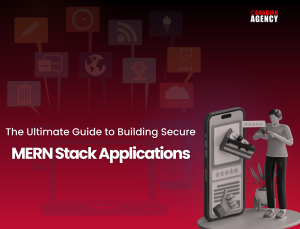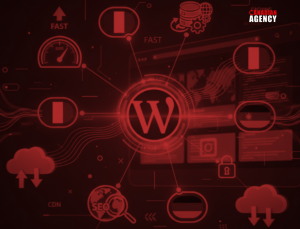In 2024, owning a technical gadget is expected, making it crucial for businesses to work with the right mobile app development company to create the perfect app. The growing demand for mobile apps has intensified competition, so choosing the best development tools is crucial. Let’s explore the essential tools every development company needs in 2024.
IDEs (Integrated Development Environments)
IDEs (Integrated Development Environments) are the backbone of software development, simplifying the process and boosting productivity. By integrating a text editor, compiler, and debugger, they streamline the development process and build automation tools into a single user interface, ensuring developers can work efficiently.
Some of the IDESs are :
Android Studio
Android Studio is the IDE for Android development. It offers coding, testing, and debugging tools tailored to Android.
Key Features
- It is Equipped with tools like code completion, refactoring, and debugging coding.
- Test apps on different Android devices and configurations seamlessly.
- It Easily integrates with Firebase, Kotlin, and Flutter for a smoother workflow.
- It supports multi-language code like Kotlin, Java, C, and C++.
Xcode
Xcode is Apple’s integrated development environment (IDE) for building software programs for macOS, iOS, iPadOS, watchOS, tvOS, and visionOS. It offers a complete collection of development tools, including a code editor, debugger, interface designer, and simulator.
Key Features :
- Xcode enhances code writing with syntax highlighting and code completion.
- Smooth Integration and feature of debugging iOS, watchOS, and macOS apps with tailored launch options.
- With UI Design Capabilities, it creates smooth app flows and transitions with customizable objects and storyboards.
- Xcode has Interface Builder, Instruments, iOS Simulator, Asset Catalog, and App Store Connect.
Visual Studio Code
VS is a free and open-source code editor developed by Microsoft. It’s designed to be lightweight and efficient, making it a popular choice for developers working with various programming languages.
Key Features
- VS Code runs on Windows, macOS, and Linux, making it accessible to developers on various operating systems.
- VS Code provides intelligent code completion suggestions based on the context of your code, helping you write code faster and more accurately.
- Built-in debugging tools allow you to step through your code, set breakpoints, and inspect variables.
- VS Code includes built-in support for Git, making it easy to manage version control and collaborate with other developers.
Testing Tools
Testing tools are the bedrock of software quality and reliability. They automate testing processes, saving time and increasing accuracy, and their flexibility allows developers to adapt to each project’s unique needs.
Here are three standard testing tools:
Appium
Appium is an open-source test automation framework for mobile apps on iOS and Android.
Key Features
- It Supports both iOS and Android platforms.
- It uses the WebDriver protocol, making it compatible with most programming languages (Java, Python, Ruby, etc.).
- Offers a rich set of APIs for interacting with mobile app elements.
- Provides flexibility for testing native, hybrid, and web apps.
Calabash
Calabash is an open-source testing framework with diverse APIs for automating user interactions like swipes, taps, and pinches. Developers can use it to engage with the app as a user would, detecting and resolving issues quickly.
Key Features
- It Supports iOS and Android platforms.
- Calabash uses a domain-specific language (DSL) to write test cases.
- It offers built-in support for common mobile app testing scenarios.
- It Provides integration with popular CI/CD tools.
Test Fairy
It’s a mobile beta testing platform for gathering valuable user feedback and insights before app releases. It offers tools for distributing apps to testers and collecting feedback and crash reports.
Key Features
- It allows for easy distribution of beta versions to testers.
- It Provides detailed crash reports and performance metrics.
- Enables testers to provide feedback and screenshots directly within the app.
- It Offers integration with popular CI/CD tools.
Deployment Tools
Deployment tools are the safety net of software development, automating the process of deploying applications to production environments. Their comprehensive nature streamlines the process, reduces errors, and ensures consistency, giving developers a sense of security.
Azure DevOps
It is a cloud-based DevOps platform providing comprehensive tools and services to help software development teams plan, build, test, and deploy applications.
Key Feature
- Build and deploy automation to streamline and automate the process of building, testing, and deploying mobile applications.
- Test management to help teams track the results of their tests.
- A collaboration tool that allows teams to work together on their software development projects.
AWS Pipeline
AWS CodePipeline is a fully managed continuous delivery service that automates the release pipeline of your applications.
Key features
- Automates the entire software release process, from code changes to deployment.
- Provides a visual representation of your release pipeline, making it easy to understand and manage.
- Integrates with other AWS services and third-party tools.
- Allows you to customize your release pipeline to fit your specific needs.
FastLane
It’s a tool suite for automating iOS and Android app development and deployment, streamlining tasks like code signing, testing, and app store release.
Key features
- Automatically manages code signing certificates and provisioning profiles, ensuring smooth app distribution.
- Integrates with popular testing frameworks like XCTest and Espresso to automate unit, UI, and performance testing.
- Streamlines the process of releasing apps to the App Store and Google Play Store, including screenshots, metadata, and pricing.
Jenkins
Jenkins is an open-source automation server used to automate software development processes. It acts as a CI/CD server to streamline development workflows and improve software quality.
Key Features
- Jenkins has many functionalities, including version control systems, build tools, testing frameworks, deployment tools, and more.
- Jenkins offers various security features to protect your builds and data, such as user authentication, role-based access control, and encryption.
- Jenkins can integrate with various tools and technologies, such as Jira, Bugzilla, AWS, GCP, Nagios, and Zabbix.
Version Control System
A version control system (VCS) is a software development tool that helps teams manage changes to source code over time. It tracks and records modifications made to files, allowing developers to collaborate efficiently, revert to previous versions, and understand the history of their projects.
Key features
- VCS can be centralized, where all changes are stored in a single repository, or distributed, where each developer has a local copy of the repository.
- Developers can create branches to work on separate features or bug fixes without affecting the main codebase.
- VCS facilitates collaboration among developers by providing a shared workspace and tools for managing concurrent changes.
Git
Git is a distributed version control system (DVCS) that tracks changes in computer files and coordinates work among multiple people. It’s primarily used for software development but can be used to track changes to any set of files.
Key Features
- Git branches are very lightweight, making creating and switching between them easy.
- Git stores each commit as a snapshot of the entire repository at a particular time, making it easy to revert to previous versions.
- Git’s history is nonlinear, allowing you to visualize and navigate different branches and merges.
- Git is an open-source project, which means it’s free to use and has a large and active community of developers.
Design and Prototyping tools
Design and prototyping tools are essential for bringing digital ideas to life. They allow designers and developers to create interactive mockups, test concepts, and collaborate effectively.
Sketch
Sketch is a popular vector-based design tool for creating user interfaces (UIs) and user experience (UX) designs. It’s particularly well-suited for designing websites, mobile apps, and other digital products.
Key features
- Extend Sketch’s functionality with a vast ecosystem of plugins.
- Track changes and collaborate with team members effectively.
- Export designs in various formats, including PNG, JPEG, SVG, and PDF.
- Create interactive prototypes to test and validate your designs.
Adobe XD
Adobe XD is a vector-based user experience (UX) design tool developed by Adobe Systems. It helps designers create prototypes and wireframes for websites, mobile apps, and other digital experiences.
Key features
- It creates scalable and high-quality Vector-based designs that can be resized without losing clarity.
- Quickly build interactive prototypes to test and iterate on your designs.
- Extend the functionality of Adobe XD with third-party plugins and extensions.
Figma
Figma is a popular cloud-based design tool for creating user interfaces (UI) and prototypes. It’s particularly well-known for its collaborative features, which allow teams to work together in real-time on the same design projects.
Key features
- Create scalable and high-quality Vector graphic designs.
- Build interactive prototypes to test user flows and gather feedback.
- Create and manage design systems with shared styles and components.
- Expand Figma’s functionality with various plugins for specific tasks.
- Connect Figma with different design and development tools for a seamless workflow.
Cross-Platform Development Tools
Cross-platform development tools enable developers to create applications running on multiple operating systems, such as iOS, Android, Windows, and macOS. These tools offer significant advantages in efficiency, cost-effectiveness, and code reusability.
React Native
A popular JavaScript framework for building native mobile applications for iOS and Android platforms. It allows developers to write code once and use it to create applications for both platforms, saving time and effort.
Key features
- React Native apps offer near-native performance, providing a smooth user experience.
- Experience instant code updates without the need to refresh the entire app from its hot reloading feature.
- Use declarative syntax to describe your app’s UI, making it easier to understand and maintain.
- Access native platform features through JavaScript APIs.
Flutter
Flutter is an open-source UI software development kit created by Google for building cross-platform applications. It aims to use a single codebase to develop applications for multiple platforms.
Key features
- Flutter uses the Dart programming language, which is easy to learn and has a modern syntax.
- Flutter’s architecture ensures fast and smooth performance on various devices.
- Benefit from a growing community of developers and a vast ecosystem of third-party packages and tools.
Xamarin
Xamarin is a cross-platform development tool that enables developers to create native mobile apps for iOS, Android, and Windows Phone. This lets you write the app’s logic once and deploy it to multiple platforms.
Key Features
- Xamarin apps have native performance, meaning they run as fast and smoothly as apps written in Objective-C or Java.
- Xamarin allows you to create platform-specific UIs so your apps look and feel native on each platform.
- Xamarin uses the .NET framework, which provides a rich set of libraries and tools for building applications.
- Xamarin integrates seamlessly with Visual Studio, providing a robust development environment.
API Documentation Tools
API documentation tools are crucial for developers to understand and interact with APIs effectively. They provide structured information about an API’s endpoints, parameters, responses, and other relevant details.
Postman
A popular API development environment that simplifies creating, testing, and documenting APIs. It’s a valuable tool for developers, testers, and API consumers who must interact with and understand APIs effectively.
Key features.
- It creates mock APIs to simulate real-world behavior and test your applications before fully integrating.
- It Generate API documentation automatically based on your requests and test scripts.
- Postman’s integration with other tools and platforms, such as GitHub, Slack, and Jenkins, to streamline your workflow.
Swagger
Swagger is an open-source API specification and documentation tool. It defines a standard interface for RESTful APIs, making it easier for developers to design, build, document, and consume APIs.
Key features
- Swagger uses YAML or JSON to define an API’s structure and operations, including request and response parameters, authentication methods, and error handling.
- Swagger can generate code stubs for various programming languages and frameworks, simplifying development.
- Swagger uses the OpenAPI Specification (OAS), a widely adopted standard for describing REST APIs.
- Swagger integrates with popular development tools and platforms like Postman, Springfox, and Swagger UI.
Collaboration Tools
Collaboration Tools are software applications that facilitate teamwork and communication among individuals or groups, regardless of their physical location. These tools enable efficient collaboration, knowledge sharing, and project management, fostering productivity and innovation.
Slack
Slack is a cloud-based platform for team collaboration, file sharing, and real-time communication. It is designed to replace email and streamline teamwork.
Key features
- Connect to other popular tools and services, such as Google Drive, Dropbox, and Asana.
- The “thread replies” feature helps to keep conversations organized and focused, making it easier to follow along and find relevant information.
- Slack’s integrations help teams connect their favorite tools, streamline workflow, and reduce app switching.
MS Teams
Microsoft Teams is a collaboration platform that combines chat, video conferencing, file sharing, and application integration into a single workspace. It’s designed to help teams work together more effectively, regardless of location.
Key Features
- Teams integrates seamlessly with other Office 365 apps like Word, Excel, and PowerPoint, making collaborating on documents and spreadsheets easy.
- Teams can host live events, such as webinars and town halls, for large audiences.
- Teams offer a background blur feature that can help to reduce distractions during video calls.
- Teams is designed to be accessible to users with disabilities, with features like screen reader compatibility and keyboard navigation.
Trello
Trello is a popular visual collaboration tool that helps teams organize, manage, and track tasks.
Key features
- The main Kanban board interface comprises lists (columns) and cards (tasks). Each card represents a task or project item, with customizable labels, due dates, attachments, and comments.
- Collaborate with team members by adding comments and discussions to cards.
Asana
Asana is a popular project management software that helps teams organize, plan, and track their work. It offers various features to streamline collaboration and improve productivity.
Key Features
- Create, assign, and track tasks within projects.
- Collaborate with team members through comments, notifications, and @mentions.
- Track project progress and performance with customizable reports.
- Connect Asana to other tools and services like email, calendar, and CRM systems.
Bug Tracking Tools
These tools provide a centralized platform for recording, prioritizing, assigning, and resolving issues, improving overall software quality and efficiency.
Jira
Jira is a popular project management and issue-tracking tool used by software development teams and organizations of all sizes. It provides a centralized platform for teams to plan, track, and manage their work, from small tasks to complex projects.
Key features
- Create, assign, and track issues (also known as tickets) throughout their lifecycle.
- Visualize the workflow of your projects using Kanban boards with drag-and-drop functionality.
- Manage agile projects using Scrum boards with sprints, backlogs, and task estimation.
- Generate reports and dashboards to track progress, identify bottlenecks, and make data-driven decisions.
- Integrate with other tools and services, such as Git, Bitbucket, and Slack.
- Automate repetitive tasks and workflows to save time and reduce errors.
Taiga
Taiga is a free and open-source project management tool with robust bug-tracking capabilities. Designed for cross-functional agile teams, It offers a user-friendly interface and comprehensive features for effective project management.
Key features
- Define issue types, priorities, and severities to match your workflow.
- Seamlessly add issues to sprints for efficient management.
- Convert issues into user stories for prioritization and planning.
- Quickly find and manage issues using advanced filtering and search options.
Conclusion
Choosing the right mobile app development tool can be challenging for any development business, but it becomes easier with a systematic approach. Start by thoroughly assessing each tool’s capabilities and determining which one best meets your team’s needs. With this information, you can select the optimal mobile app development tool.




